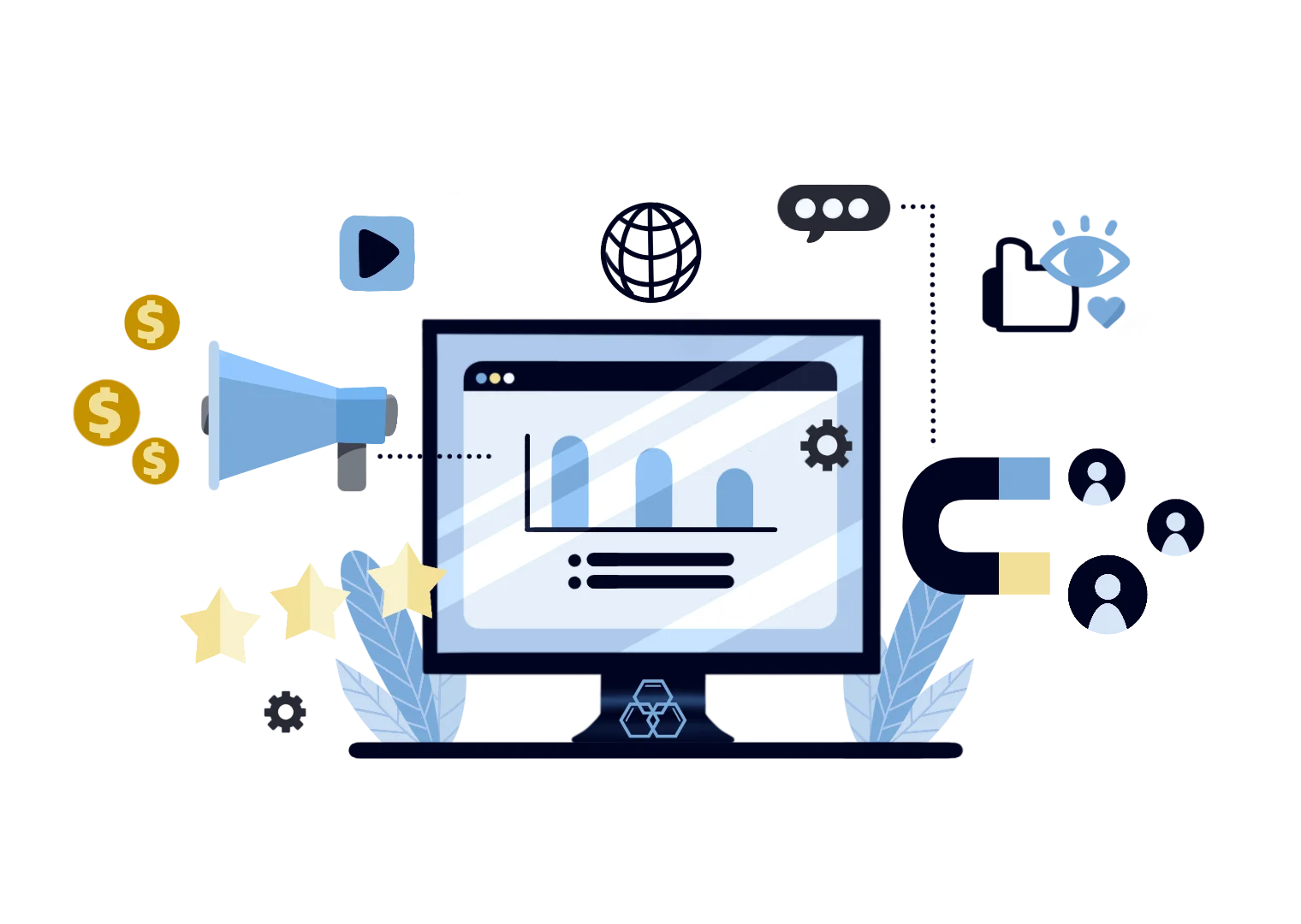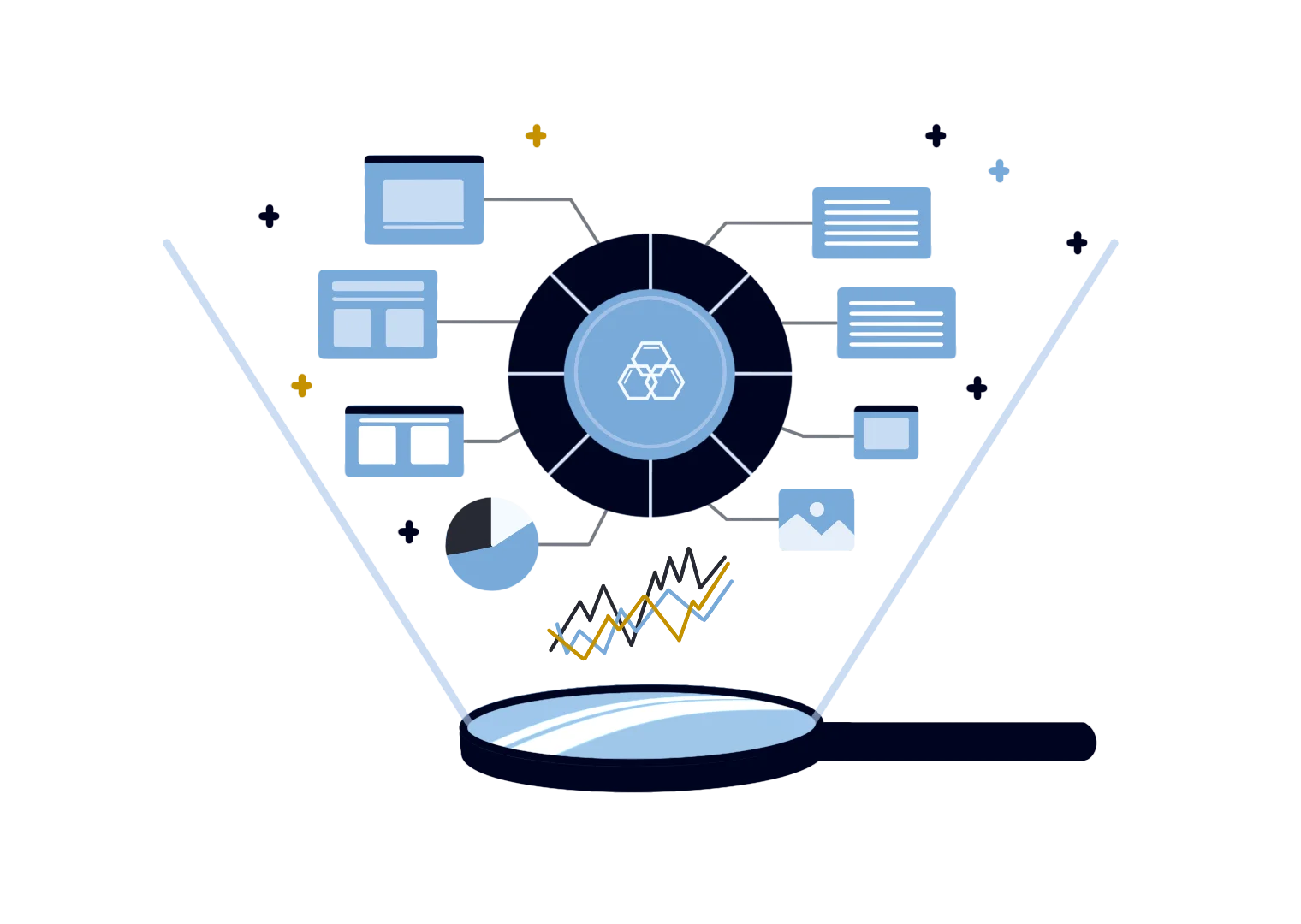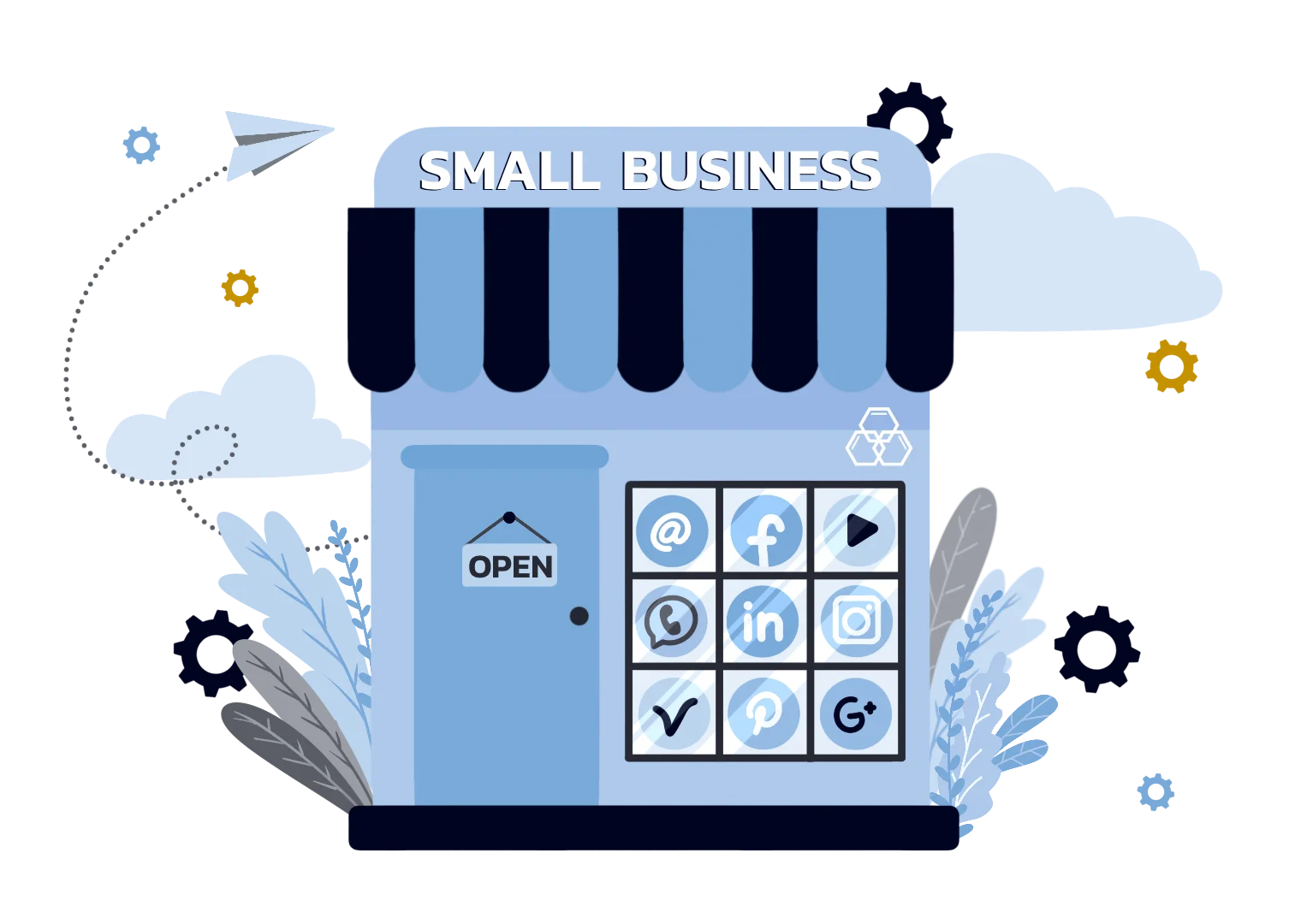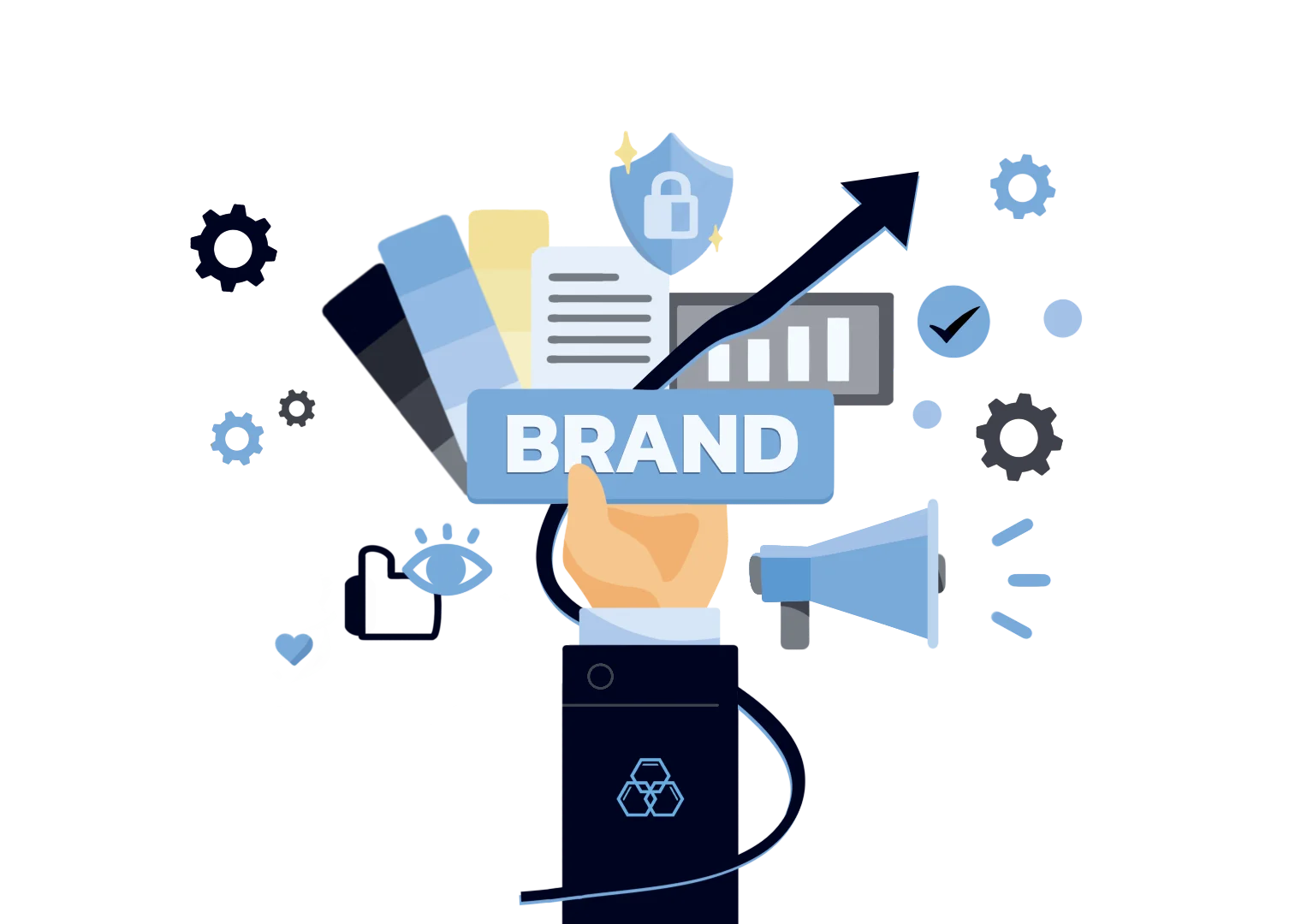You may have heard the term "website analytics" before, but what are website analytics, and how can they benefit your business? Website analytics analyzes your website data to improve your website's performance. By understanding your website traffic reports and how web users interact with your site, you can make informed decisions that will help you attract more site visitors and convert more leads.
In this blog post, we'll give you a crash course in website analytics and show you how to start using website analytics to benefit your business. By the end of this post, you'll better understand what website analytics is and how you can use it to improve your website performance. So let's get started!
What Are Website Analytics?
Website analytics is analyzing your website data to improve your website's performance. This data can include the number of website visitors, the average time spent on your site, the most popular pages with visitors, and more. Understanding this data enables you to make informed decisions about improving your website's design, content, and overall user experience.
What Is Data-Driven Marketing?

Before we dive into website analytics, it's important to understand data-driven marketing. Data-driven marketing is a strategy that uses data to inform marketing decisions. You can create more relevant and effective marketing campaigns by understanding your target audience's behavior and preferences.
Data-driven marketing is not new, but it has become more important in recent years as we've increasingly relied on data. In the past, marketing was primarily based on gut instinct and experience. While there's still a place for intuition in marketing, data should now be the foundation of your decisions.
Why is Website Analytics Important?

Now that you know what website analytics is and how it relates to a data-driven marketing strategy let's take a look at some of its benefits.
Improve Your Web Page Performance
By understanding how users interact with your site, you can make changes to help your site load faster, navigate more efficiently, and convert more leads.
Attract More Visitors
By understanding which parts of your site have the most traffic from people visiting your website, you can make changes that will help you attract even more.
Save Time and Money
If you're running ads or doing any other form of marketing for your website, analytics can help you track your progress and ROI (return on investment). By understanding which marketing efforts are working and which aren't, you can save time and money by focusing on the things that work.
How Does Website Analytics Work?

Every time you visit a website, your computer is transmitting data about your visit. This data is collected and used to improve the website experience for all users. Most web analytics tools use cookies and JavaScript (JS) tags to gather relevant data about website visits.
JS tags
A JS tag is a snippet of code you insert into your site's code. These JavaScript code snippets execute whenever someone visits your site and sends data about the visit back to the web analytics tool.
Cookies
Cookies are small text files placed on visitors' devices when they visit your site. These files collect data about the visitor's activity on your site.
Both JS tags and cookies are necessary for site analytics tools to function correctly. However, some users may have JS disabled or block cookies, which can impact the accuracy of your data.
Website Analytics Terms Every Growing Business Should Know
When you’re first starting out with website analytics, it can feel like you’re learning a whole new language. Here are the most common terms you’ll come across, so you can start making sense of your data and using it to grow your business.
Bounce Rate
Your website’s bounce rate is the percentage of people who leave after viewing only one page. A high site bounce rate can signal that your content isn’t relevant to what people are looking for or that your website is challenging to navigate. A low bounce rate indicates that people find what they’re looking for on your site and stick around to learn more.
Session Duration
Session duration (also called time on site) is the average time visitors spend on your website during a single visit. It gives insights on customer behavior and user engagement: if its high it indicate that your content is engaging and relevant, while low visitor sessions may mean that people quickly find what they need and then leave. If unique visitors stay on the site longer, it means they are interested.
Acquisition Channels

Acquisition channels help you analyze which platforms are converting and which need more work. It can surprise you where you see your traffic come from. Not all acquisition channels are created equal. You want to focus on those most likely to convert into paying customers or subscribers. For example, social media accounts, organic search traffic, direct search, email, referrals, and even other sites talking about you.
Behavior Flow
Behavior flow shows how users navigate from one page or event to another. It is important to see what content people engage with the most and where they drop off. You can use this data to improve the user experience by changing your site’s navigation or content.
Audience
Audiences are groups of website visitors with common attributes, such as gender, device type, country, or browsing and user behavior. You can use this data to segment your traffic data and better understand your site's visitors.
Site Speed
Site speed is the time it takes for a page to load. A fast site is important for a good user experience and can impact your search engine optimization ranking. Use site speed data to identify slow-loading pages and make improvements. Keeping loading times as fast as possible is crucial because if your pages don’t load immediately, you may lose many visitors.
Conversion Rate
Your conversion rate is the percentage of people who take the desired action on your website, usually a sale. This could be anything from subscribing to your newsletter to making a purchase. If your conversion rate is low, it could mean that your call-to-action isn’t compelling or that your website isn’t optimized for conversions.
Returning Users
Returning users are people who have visited your site before using the same device within the last two years. This data can help you understand how often people come back to your site and what content keeps them coming back.
How To Start Using Website Analytics

Now that you know some of the most important website analytics terms, it’s time to start using them to grow your business. Here's what you can do to get started.
Identify Your Goals
The first step is to identify your goals for using web analytics. Do you want to increase your traffic or improve your conversion rate? Identify which areas of your site need improvement. Once you know your goal, you can start tracking the right key metrics.
Choose the Right Tools
Many different web analytic tools are available, so choosing the right one for you and your business is essential. If you're not sure where to start, Google Analytics is a good option for most businesses.
Track Your Progress
Once you've set up web analytics for your site, track your progress over time to see whether your changes have the desired effect.
Make Changes Based on Data Points
Finally, remember to make changes to your site based on the marketing performance from your web analytics. If something isn't working, don't be afraid to experiment until you find something that does work!
FAQs
What are the four pillars of web analytics?
The four pillars are Data Collection (gathering raw data), Processing (organizing and structuring the data), Reporting (presenting the data in an understandable format), and Analysis (interpreting the data to gain insights and make decisions).
What skills are needed for web data analytics?
Necessary skills include technical proficiency with tools like Google Analytics, data analysis, critical thinking, a solid understanding of marketing fundamentals, and strong communication skills to explain insights to others.
What is the main purpose of a website?
The main purpose of a website is to provide a customer journey that leads to a desired experience for the visitors. This is often summarized as a "conversion," which can be a purchase, a sign-up, generating a lead, or sharing information.
Is Google Analytics free?
Yes, the standard version of Google Analytics (GA4) is free and offers robust features for most small to medium-sized businesses. Google also offers a paid, enterprise-level version called Google Analytics 360 with higher data limits and advanced integrations.
Make Your Website Better With Web Analytics Tools!
Website analytics is key to understanding how your website performs and what improvements need to be made. And luckily, there are tools for that online, free and premium. They can help you make data-driven decisions to help improve your website and grow your business by tracking the right metrics.
But making better insights is a challenge in itself; you need marketing experts for that. Lucky for you, we got your covered for that.
Start making better decisions with Evolv today!






